 In 1993, Zelda: The Wand of Gamelon was released for the Phillips CD-i. Thanks to the mismanagement of the Super Nintendo CD add-on (a peripheral that would ultimately birth one of Nintendo’s greatest competitors), Phillips was granted two significant Nintendo licenses with seemingly zero oversight. This led to Mario and Luigi stealing hotels from children, Link robbing a library, and the eternally titular Zelda’s first playable/starring role. This should have been a historic moment in Hyrule games, as an actual Zelda title starring Zelda in a style reminiscent of The Legend of Zelda 2: The Adventure of Link rocked the firmament of what the franchise could and would do.
In 1993, Zelda: The Wand of Gamelon was released for the Phillips CD-i. Thanks to the mismanagement of the Super Nintendo CD add-on (a peripheral that would ultimately birth one of Nintendo’s greatest competitors), Phillips was granted two significant Nintendo licenses with seemingly zero oversight. This led to Mario and Luigi stealing hotels from children, Link robbing a library, and the eternally titular Zelda’s first playable/starring role. This should have been a historic moment in Hyrule games, as an actual Zelda title starring Zelda in a style reminiscent of The Legend of Zelda 2: The Adventure of Link rocked the firmament of what the franchise could and would do.
Yet Zelda: Wand of Gamelon is simply known for the goofiest nonsense you could find on Youtube Poop.
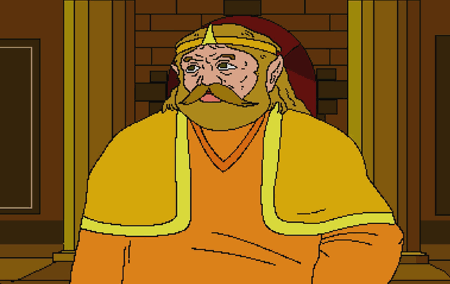
But there was a better way! Apparently! The recently released Arzette: The Jewel of Faramore gives us a world where this lost Zelda game could have actually been fun! Where did it show improvement? Well…
The Phillips CD-i was never meant for games
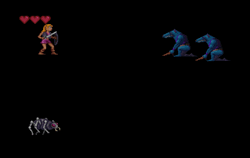 Let’s address the dodongo in the room first: getting traditional videogames out of the Phillips CD-i was just about as effective as squeezing orange juice out of a hippo. Management at Gogglebob.com has chosen not to make this article a list of the many flaws of the Phillips CD-i (as that would require repeating the phrase, “Those utter fools!” more times than our therapist allows), but please understand that the CD-i was constructed to be a learning device more than a videogame system. Imagine a fabulous future where you opened a “book” on a “compact disc” and you witnessed a “video” of a ”man” eating “a live rat” to prove that science is “cool”. Unfortunately, moving pictures was never enough to get kids to care about encyclopedias, and attempting to cobble anything else together in the CD-i architecture meant that a level the size of your average Sonic the Hedgehog map would require about 70,000 man hours of manual background painting. On the CD-i, any “traditional” game, Nintendo license or not, was damned to fail practically from the beginning.
Let’s address the dodongo in the room first: getting traditional videogames out of the Phillips CD-i was just about as effective as squeezing orange juice out of a hippo. Management at Gogglebob.com has chosen not to make this article a list of the many flaws of the Phillips CD-i (as that would require repeating the phrase, “Those utter fools!” more times than our therapist allows), but please understand that the CD-i was constructed to be a learning device more than a videogame system. Imagine a fabulous future where you opened a “book” on a “compact disc” and you witnessed a “video” of a ”man” eating “a live rat” to prove that science is “cool”. Unfortunately, moving pictures was never enough to get kids to care about encyclopedias, and attempting to cobble anything else together in the CD-i architecture meant that a level the size of your average Sonic the Hedgehog map would require about 70,000 man hours of manual background painting. On the CD-i, any “traditional” game, Nintendo license or not, was damned to fail practically from the beginning.
So how did Zelda: The Wand of Gamelon compensate for this significant shortcoming? Well, the average “level” in Z:TWOG is roughly the same size as Super Mario Bros. 1-1… before you see your first goomba. Towns, rivers, deserts, and castles are all roughly “two screens” wide, and there are often multiple portals to lead to cramped caves and petite interiors. Zelda does not have that much ground to cover because the CD-i simply could not support such an expansive (or even moderately standard) world. And this leads to a whole hell of a lot of backtracking and boomeranging around the same areas continually, lest the game take all of seven seconds to complete.
Arzette: The Jewel of Faramore is not constrained by the same restrictions as Zelda. Princess Arzette can traverse huge forests and explore deep caverns! Woo! The only downside is that many of the opening areas encourage the same kind of backtracking that Zelda experienced ages ago. But actually moving around as Arzette is pretty fun, so it is not a drag. Though this does bring us to our next issue…
The Phillips CD-i was never meant for responsiveness
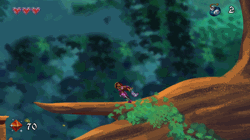 The Phillips CD-i’s default controller could generously be described as a modified mouse. It had a little roller dealy as its centerpiece, and two immediately accessible “large” buttons. It had five auxiliary buttons, too, but they were more the “start/select” of this failing enterprise. There was also a more “gamey” control pad available, but even when you were playing with that wannabe 16-bit controller, the CD-i was still working against you. The CD-i, which was built for enhanced reading, not playing, could not accept multiple button inputs simultaneously. So something as simple as “hold run and jump” available on an NES was impossible. Thus, any protagonist that happened to wander onto this cursed system controlled about as effectively as a truck. Zelda herself was limited to jumping through the up directional arrow. You know what game futilely pulled that off? Mortal Kombat Mythologies: Sub-Zero. And you do not want to be in a situation where Sub-Zero’s worst adventure was eating your lunch.
The Phillips CD-i’s default controller could generously be described as a modified mouse. It had a little roller dealy as its centerpiece, and two immediately accessible “large” buttons. It had five auxiliary buttons, too, but they were more the “start/select” of this failing enterprise. There was also a more “gamey” control pad available, but even when you were playing with that wannabe 16-bit controller, the CD-i was still working against you. The CD-i, which was built for enhanced reading, not playing, could not accept multiple button inputs simultaneously. So something as simple as “hold run and jump” available on an NES was impossible. Thus, any protagonist that happened to wander onto this cursed system controlled about as effectively as a truck. Zelda herself was limited to jumping through the up directional arrow. You know what game futilely pulled that off? Mortal Kombat Mythologies: Sub-Zero. And you do not want to be in a situation where Sub-Zero’s worst adventure was eating your lunch.
(Hey, I wonder which of those games had the most infamous cutscenes…)
Arzette: The Jewel of Faramore proves that if you marry the basic maneuverability and controls of Z:TWOG to a videogame system actually made for videogames, you can have a good time. Arzette is no Samus Aran, but jump-slash-duck-duckwalk is a very simple matter in her whole new world. And, once you throw in a few upgrades, Arzette feels at least as nimble as that time Link was stuck in the second dimension. If she was legally allowed to fight a stalfos, she could handle it! In fact, Arzette can take a literal victory lap, as races against a magical rat man (long story) have been added to multiple levels, and it feels good to see what (mini) speedrun strategies can be devised in these stages. Arzette’s world is not a complicated one, but it is one that can now be enjoyed with proper controls.
The Phillips CD-i was never meant to be seen
Alright, you’ve all seen the nonsense available in any given cutscene in Zelda: The Wand of Gamelon…
However, what you may not know is that these goofy animations apply to not only every cutscene, but every NPC friendly encountered. And a number of areas seem to have introductory scenes that happen exactly once, and exist only to remind you of… I don’t know… the general existence of Impa. It’s weird. But it is not too weird (unless you make eye contact with Impa), because it is clear the people producing this game knew the one thing Philips CD-i could do well: animation and voice acting. The CD was a brave new world for videogames, and while the Super Nintendo might have Mega Man X and Final Fantasy, it did not have any voice acting (or at least any worth a damn). So never mind some ornate introduction to the game, every damned NPC had their own animation and voice acting. This was not some “one and done” affair designed to impress at a Sears demo kiosk. At a time when CD-based games were mostly about as interactive as a rock (I guess you could throw it at someone), these Zelda characters acting like they just came out of a cartoon was new, novel, and utterly distinctive.
The only issue was that they were also an unending stream of nightmare fuel that would haunt your dreams until your dying day.
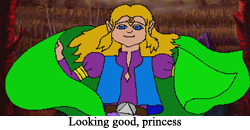 And Arzette: The Jewel of Faramore decided to roll with that to make it a feature. A:TJOF retains all the squishing, squashing, and MS Paint appeal of any given CD-i cutscene, but it offers one crucial change: everyone in Faramore is a goddamned weirdo. Even back in 1993, The Legend of Zelda series was serious business for many of its fans. Yes, there was “excuse me, Princess” Link, but he was still a serious warrior that used his shield to vault explosions. Wand of Gamelon Link… was not that. Wand of Gamelon was a parody of an adventurer. So it works when Arzette has an actual parody of an adventurer, Dail, who we can all laugh at. He is meant to be funny! In fact, thanks to the writing direction of Arzette: The Jewel of Faramore, we basically have a videogame that delightfully feels like a sitcom. Complete with Arzette being the only competent person in the cast (and her moderate bloodthirst), there is an obvious throughline between Princess Arzette and Futurama’s Turanga Leela. Poke out an eye, give her a ray gun, and Arzette could adapt to the future with aplomb.
And Arzette: The Jewel of Faramore decided to roll with that to make it a feature. A:TJOF retains all the squishing, squashing, and MS Paint appeal of any given CD-i cutscene, but it offers one crucial change: everyone in Faramore is a goddamned weirdo. Even back in 1993, The Legend of Zelda series was serious business for many of its fans. Yes, there was “excuse me, Princess” Link, but he was still a serious warrior that used his shield to vault explosions. Wand of Gamelon Link… was not that. Wand of Gamelon was a parody of an adventurer. So it works when Arzette has an actual parody of an adventurer, Dail, who we can all laugh at. He is meant to be funny! In fact, thanks to the writing direction of Arzette: The Jewel of Faramore, we basically have a videogame that delightfully feels like a sitcom. Complete with Arzette being the only competent person in the cast (and her moderate bloodthirst), there is an obvious throughline between Princess Arzette and Futurama’s Turanga Leela. Poke out an eye, give her a ray gun, and Arzette could adapt to the future with aplomb.
Zelda: The Wand of Gamelon was never meant to be a good game
Now that we are done with aplomb, let’s talk about a bomb. Early in Zelda: The Wand of Gamelon, you are informed a fisherman has become trapped in a giant skeleton, and there is an enormous rock blocking the only skeletal exit. That’s a normal The Legend of Zelda problem! Toss a bomb at the rock, and you are all set. Except, if you do that… nothing happens. Maybe you missed? Nope, hit it dead-on, and the rock isn’t going anywhere. The destructible tombstone back at the graveyard went down with one bomb and no fuss. Welp, guess there must be some other solution to this problem. Probably have to go get a Power Glove or something? Bombs are not infinite in this game, they literally cost rubies (sic) to acquire more, so no use in wasting our explosives. Wonder when I am going to find help for that fisherman? Probably later in the game…
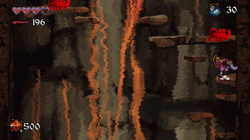 But don’t turn back, Princess! Bombs are the answer to that problem. You just inexplicably need to use ten bombs on that rock. No, there is not a single indicator that nine of those bombs are doing any progressive damage. No, having ten bombs at that point in the story is not natural, and would definitely require laying down some coin at the shop. No, there is not a single NPC that says “Rock dislikes ten smokes.” You are just expected to know that exactly ten bombs are the answer, and that is the only way to make progress.
But don’t turn back, Princess! Bombs are the answer to that problem. You just inexplicably need to use ten bombs on that rock. No, there is not a single indicator that nine of those bombs are doing any progressive damage. No, having ten bombs at that point in the story is not natural, and would definitely require laying down some coin at the shop. No, there is not a single NPC that says “Rock dislikes ten smokes.” You are just expected to know that exactly ten bombs are the answer, and that is the only way to make progress.
And that is a significant issue in Zelda: The Wand of Gamelon. Over and over again, there are “puzzles” that do not have solutions that provide any feedback that you are doing something right. Map locations are unlocked without any visual notifications, so you must drag the cursor over the whole world to see if something new is accessible. Items/weapons have oblique descriptions, so you have no idea if your new cloak is doing anything. Bosses are all based on “item solutions”, except those three witches that are not. And, like in our previous bomb example, there are situations where you can be doing everything exactly right, but there is not a positive response from the game to be found. Let me tell you about the Wizrobe fight that is borrowed from The Adventure of Link, but is worse in every way…
One could argue that this is the challenge of Zelda: The Wand of Gamelon. Once you conquer the controls, Z:TWOG is not a difficult game, as you have three lives to span every stage (which is a whole two screens), and the only penalty for losing your health is a boot back to the map screen. So they apparently went with a King’s Quest-esque item system where figuring out what item needs to go where in the world is the true challenge. But that is handled so poorly, it is a wonder anyone ever completed Z:TWOG without a FAQ…
Arzette: The Jewel of Faramore is not much more difficult than its ancestor from an action perspective. Levels are dramatically more expansive, but you have infinite lives, and respawn points are generous. And the puzzles return! However, the first time you see a “bombable rock” in A:TJOF, and throw a single bomb at it, it explodes. It makes all the difference! Whether this is just a side effect of modern game design (Arzette does get a tutorial stage to start her adventure, and that never would have happened in 1993) or because the developers identified which parts of Z:TWOG were nonsense is immaterial: Arzette: The Jewl of Faramore just works. There are still sticking points where progress can be a bear (if you do not immediately recognize the location of the golden fly, you are going to have a bad time), but at least you are never chastised for not immediately intuiting an esoteric puzzle. Search the levels, use the abilities available to you everywhere it makes the slightest sense, and you will never leave a fisherman to die inside of a dragon skeleton. It is the way it should be.
Zelda: The Wand of Gamelon was never meant to have an economy
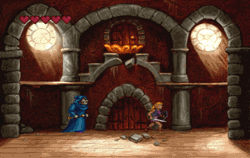 Many games struggle with their financials. Even the vaunted “real” Legend of Zelda franchise seems to equally contain titles where you are constantly strapped for rupees, or you have a wallet of 999 for 99% of the quest. Zelda: The Wand of Gamelon strains just the same as the canon members of its franchise. Since there is no sort of leveling system involved, you technically have no reason to ever defeat a monster. To encourage violence, every creature across this land drops cash, and you need that dough. Taking a page from the original The Legend of Zelda, you need money not only to buy goods and services, but utilizing a projectile or even your double jump will knock a few rubies (ugh) off your tally. Don’t worry, though, because gems are plentiful! It just feels like crap to waste a resource every time you want to jump over a pond, even when you likely won’t have to buy a thing past the first three areas.
Many games struggle with their financials. Even the vaunted “real” Legend of Zelda franchise seems to equally contain titles where you are constantly strapped for rupees, or you have a wallet of 999 for 99% of the quest. Zelda: The Wand of Gamelon strains just the same as the canon members of its franchise. Since there is no sort of leveling system involved, you technically have no reason to ever defeat a monster. To encourage violence, every creature across this land drops cash, and you need that dough. Taking a page from the original The Legend of Zelda, you need money not only to buy goods and services, but utilizing a projectile or even your double jump will knock a few rubies (ugh) off your tally. Don’t worry, though, because gems are plentiful! It just feels like crap to waste a resource every time you want to jump over a pond, even when you likely won’t have to buy a thing past the first three areas.
Meanwhile, in Arzette: The Jewel of Faramore, you…
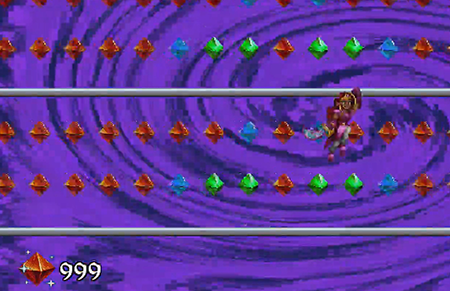
… Constantly have more cash than you could ever spend.
Well, I didn’t say they fixed everything about Zelda: The Wand of Gamelon! But they tried, dammit.
SBC #30 Zelda & Zelda: The Wand of Gamelon & Arzette: The Jewel of Faramore
Zelda in Super Smash Bros Ultimate
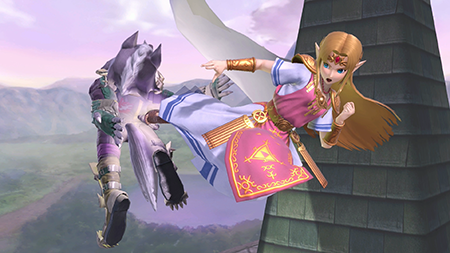
- She any Good? Look, I know she is technically not any good, but I like her. I am a glass cannon kind of guy, and that steerable fireball is the bee’s knees. However, her crappy mobility was always intended to pair with her old ability to transform into an agile ninja, and that ghost knight being her replacement is a serious downgrade.
- That final smash work? The black hole aspect of Triforce of Wisdom is great, because who wants to blow their final smash on a miss? Past that, it is weirdly lackluster. Zelda has decades of appearances, and is almost always associated with any given Legend of Zelda’s grand finale. Shouldn’t there be something more interesting available than “basically that thing Rosalina does”?
- The background work? Back on the N64, Hyrule Castle was the first Smash Bros. stage many people ever saw. Now it has returned to be… pretty forgettable. Remember when time tornadoes were enough of a gimmick to make a stage? Other than that, it is basically three horizontal lines and three small platforms. Stay out of the greenhouse!
- Classic Mode: Wisdom Prevails is Zelda fighting Smash’s baddies across the many Zelda stages. Starting with Wario and Bowser made it seem like it might be a situation where Wise Zelda fights the biggest dummies in the cast, but Dark Samus is arguably one of the most cunning villains. And speaking of cunning, Ganondorf/Big Piggy Ganon is the natural climax.
- First Appearance: Damn, Ocarina of Time Zelda in Melee was really designed to be Sheik’s partner. I understand that Zelda had not participated in much cardio in her (canon) native franchise up to that point (just a jog through some castles), but this Zelda can hardly move. And her attacks are not strong, either! She is intended to be the “smash” to Sheik’s “speed”, but… she ain’t exactly Falcon Punch’ing. OG Zelda may as well be a different character from her modern incarnation.
- Smash Trivia: “This” Zelda is primarily based on the Zelda design from A Link to the Past and A Link Between Worlds, but Ocarina of Time Young & Old Zelda, Wind Waker Zelda, Spirit Tracks Zelda, and Breath of the Wild Zelda are also available as spirits. Princess Hilda of The Bad Place is in there, too. So, weirdly enough, Twilight Princess Zelda, Zelda’s incarnation in the previous Smash Bros. title, is not represented at all.
- Amiibo Corner: So many Zelda. Smash Zelda is from Twilight Princess, with an ornate dress, cool gloves, and the handicap of being the worst Zelda. Breath of the Wild Zelda looks like she is going to take charge and do some research, while Tears of the Kingdom Zelda has a traditional outfit with a bendy sword. Wind Waker Zelda is expressive but should be Tetra. Skyward Sword Zelda wins, because she brought her big ol’ bird buddy.
- Does Smash Bros Remember Today’s Game? That is absolutely Smash’s Zelda on Zelda: The Wand of Gamelon’s cover.
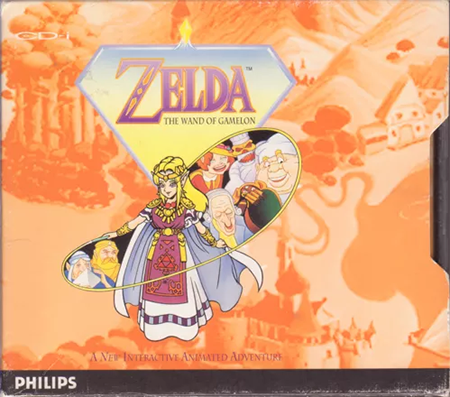
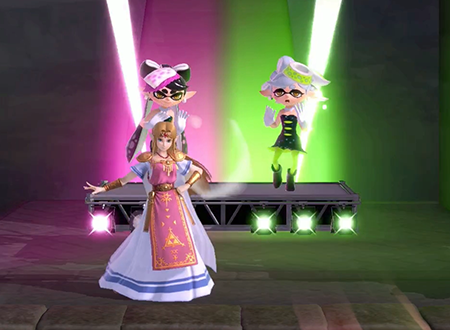
She does not appear in that outfit during the events of Zelda: The Wand of Gamelon, but it is obvious Sakurai drew inspiration from this CD-i title in choosing the “Ultimate” Zelda.
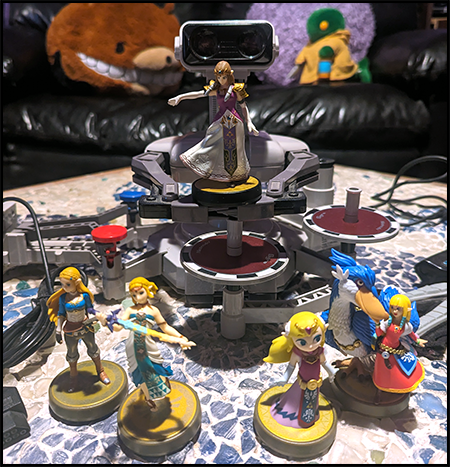
Zelda in The Wand of Gamelon & Arzette: The Jewel of Faramore
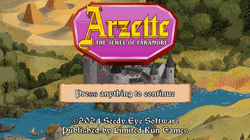 System: Zelda: The Wand of Gamelon was only ever possible on the Phillips CD-i. Arzette: The Jewel of Faramore is currently available on Nintendo Switch, Playstation 4/5, Xbox X/S, and Steam. This makes the latter a tweak more accessible.
System: Zelda: The Wand of Gamelon was only ever possible on the Phillips CD-i. Arzette: The Jewel of Faramore is currently available on Nintendo Switch, Playstation 4/5, Xbox X/S, and Steam. This makes the latter a tweak more accessible.- Number of players: Whatever your princess adventure, it is single player.
- They’re Sisters: Zelda and Arzette both have one significant thing in common: they can wreck their worlds with sword beams. Zelda gets her “have full health, sword shoots a beam” powerup early, and Arzette can obtain a Mega Buster-esque chargeable sword wave about halfway through her quest. But no matter the heroine, their worlds’ monsters are not equipped for ranged attacks, and will get absolutely shredded by princess projectiles.
- Saturday Morning: While it is lost to Big Lots discount bins now, the Legend of Zelda animated series of 1989 likely influenced the look and feel of Zelda’s CD-i adventure. Or, at the very least, it influenced her outfit. But still! We have a coy Link, weirdo faeries, and a Zelda that is able to leave a castle. You didn’t see that much in the actual games!
- What’s in a name: The Wand of Gamelon is just the thingy you chuck at Ganon after using a candle. That’s it. No lore. No dread artifact fear. Just a stick you steal from a shapeshifter, and then toss at a pig man. It may as well have been that same cloak you throw over the mummy.
- Watch it, buddy: Even Worse Streams took a random night to play through the entirety of Arzette: The Jewel of Faramore.
We didn’t 100% the thing, but we did slay an evil wizard. And, for the record, “we” was fanboymaster, BEAT, Cassandralyn, Wheels, and Trynant.
- Favorite Boss (A:TJoF): Cornrad the Scarecrow has extremely ineffectual teleporting skills, and is ultimately defeated by a friendly crow. I cannot think of a more demeaning end for an opponent since the likes of Conker’s Bad Fur Day.
- Say something mean about Arzette: The Jewel of Faramore: There is a game-wide quest to acquire a sword upgrade, and it is unlikely you will complete it before approaching the final boss. So returning to beat the game again with your chainsaw blade should be triumphant… except the final boss doesn’t involve any swordplay. At all. While I am only moderately suggesting that a super boss should be added for the purpose of utilizing my mega sword, I am just going to charitably call this “anticlimactic”.
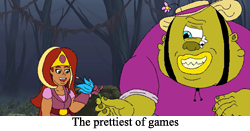 An end: The 100% completion bonus for finding everything in Arzette: The Jewel of Faramore is a bonus scene teasing a potential sequel involving the Book of Oakurin, the periodical that had previously sealed the big bad. Given the original “sequel” (long story) to Zelda: The Wand of Gamelon was Link: The Faces of Evil, which featured Link recovering the Book of Koridai, it is possible our next adventure will star “unlikely hero” and Link expy, Dail. Or maybe I am being overly optimistic about seeing that bard in action.
An end: The 100% completion bonus for finding everything in Arzette: The Jewel of Faramore is a bonus scene teasing a potential sequel involving the Book of Oakurin, the periodical that had previously sealed the big bad. Given the original “sequel” (long story) to Zelda: The Wand of Gamelon was Link: The Faces of Evil, which featured Link recovering the Book of Koridai, it is possible our next adventure will star “unlikely hero” and Link expy, Dail. Or maybe I am being overly optimistic about seeing that bard in action.- Did you know: Seedy Eye Software (say that name out loud slowly) also released an unofficial-but-extremely-faithful remake of the CD-i Zelda titles before making Arzette: The Jewel of Faramore. It was only legitimately available online for two days before Nintendo C&D’ed Gamelon’s return, though.
- Would I play again: Arzette: The Jewel of Faramore is a fun game that I might give another night or two in my life just to enjoy the unique experience. Zelda: The Wand of Gamelon is getting sealed in a book, and tossed into a sealed library. Sorry! That’s the way it’s gotta be.
What’s next? Is Arzette the evil clone of Zelda? Or is the Princess of Hyrule the wicked one? And does Samus Aran have this problem with her own doppelganger? We will investigate! Please look forward to it!
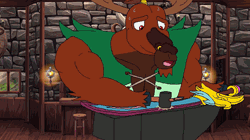
He’ll be done any minute now